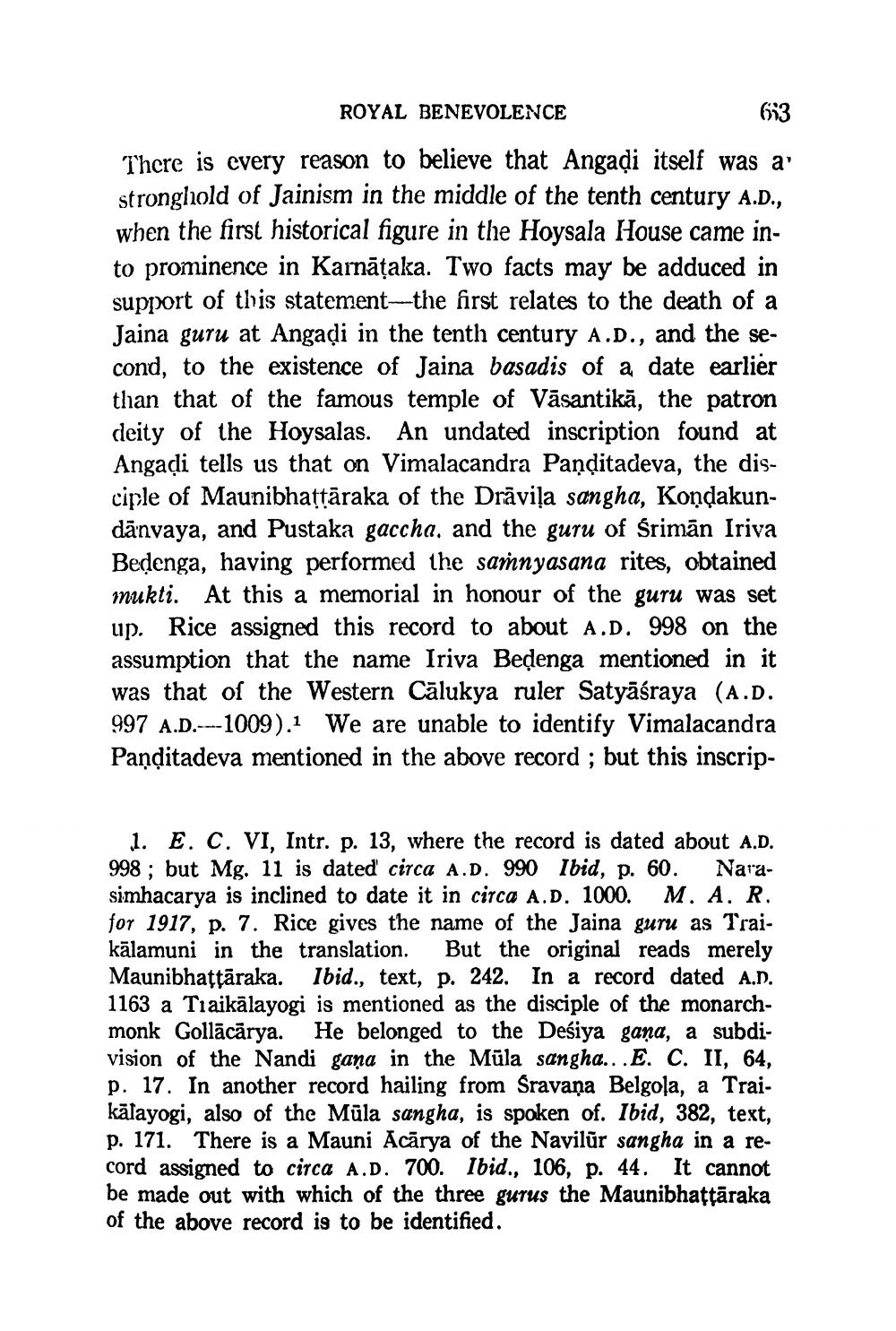________________
ROYAL BENEVOLENCE
613 There is every reason to believe that Angaļi itself was a stronghold of Jainism in the middle of the tenth century A.D., when the first historical figure in the Hoysala House came into prominence in Karnāțaka. Two facts may be adduced in support of this statement-the first relates to the death of a Jaina guru at Angadi in the tenth century A.D., and the second, to the existence of Jaina basadis of a date earlier than that of the famous temple of Vāsantikā, the patron deity of the Hoysalas. An undated inscription found at Angadi tells us that on Vimalacandra Paņạitadeva, the disciple of Maunibhattāraka of the Drāviļa sangha, Kondakundānvaya, and Pustaka gaccha, and the guru of śrimān Iriva Bedenga, having performed the samnyasana rites, obtained inukti. At this a memorial in honour of the guru was set up. Rice assigned this record to about A.D. 998 on the assumption that the name Iriva Beļenga mentioned in it was that of the Western Cālukya ruler Satyāśraya (A.D. 997 A.D.---1009).1 We are unable to identify Vimalacandra Panditadeva mentioned in the above record ; but this inscrip
1. E. C. VI, Intr. p. 13, where the record is dated about A.D. 998 ; but Mg. 11 is dated circa A.D. 990 Ibid, p. 60. Narasimhacarya is inclined to date it in circa A.D. 1000. M. A. R. for 1917, p. 7. Rice gives the name of the Jaina guru as Traikālamuni in the translation. But the original reads merely Maunibhattāraka. Ibid., text, p. 242. In a record dated A.N. 1163 a Tiaikālayogi is mentioned as the disciple of the monarchmonk Gollācārya. He belonged to the Desiya gana, a subdivision of the Nandi gaña in the Mūla sangha.. .E. C. II, 64, p. 17. In another record hailing from Sravana Belgola, a Traikālayogi, also of the Mūla sangha, is spoken of. Ibid, 382, text, p. 171. There is a Mauni Acārya of the Navilur sangha in a record assigned to circa A.D. 700. Ibid., 106. p. 44. It cannot be made out with which of the three gurus the Maunibhattāraka of the above record is to be identified.




